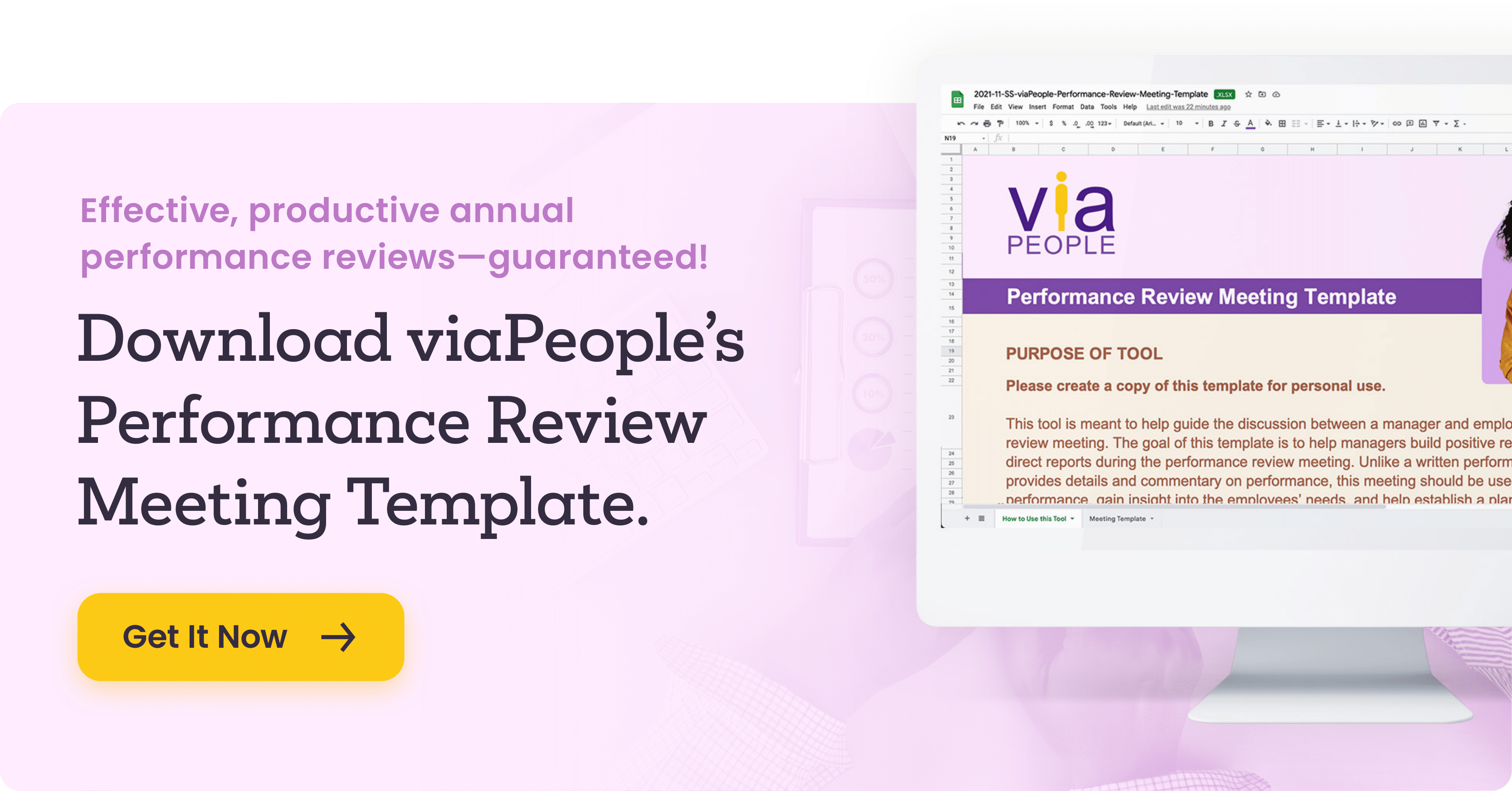7 Tips for Getting the Most Out of Your 360 Degree Feedback Process
Improve Your Leadership Skills Through 360 Degree Feedback
 Research has consistently shown that the receipt of 360 degree feedback results in positive behavior change. As a leader receiving 360 feedback, the results that you achieve are going to be directly related to the actions you take in response to your feedback results. Follow the 7 steps outlined below to realize the benefits of the process and achieve your career goals.
Research has consistently shown that the receipt of 360 degree feedback results in positive behavior change. As a leader receiving 360 feedback, the results that you achieve are going to be directly related to the actions you take in response to your feedback results. Follow the 7 steps outlined below to realize the benefits of the process and achieve your career goals.
→ For more information on 360 degree feedback, download viaPeople's whitepaper: The 360 Degree Feedback Advantage.
1. Be Positive
It is important to keep in mind throughout the entire 360 degree feedback process that feedback is aimed at self-improvement and ongoing growth. We need to recognize that everyone has strengths and opportunities for improvement and that others tend to see us differently than we see ourselves. That is one of the clear benefits of 360 degree feedback.
Being positive and professional throughout the process will allow you to maximize the benefits. While reviewing your feedback results it is important to keep in mind that it is worse not to receive any feedback than it is to receive constructive feedback.
2. Maximize Your Openness to Feedback
Before reviewing your individual 360 feedback results, mentally prepare yourself to receive input from others and be willing to understand and accept it. It is not unusual for 360 feedback results to include some constructive criticism, and each of us has a natural tendency to emotionally react respond to criticism. The emotion can take the form of anger or embarrassment, and it is usually followed by behavior that isn’t very constructive such as defensiveness, withdrawal, attack or denial. If you allow these behaviors to go unchecked, you greatly reduce your chances of learning from your feedback and taking action to improve performance. In fact, if you respond negatively to your feedback, you may be demonstrating some of the behaviors that others have told you are ineffective.
Spend a bit of time thinking about how you typically respond to constructive feedback, and then stand prepared to counter this natural reaction with positive action. Once you understand the ways in which you typically respond to constructive feedback you will be able to identify any counterproductive behaviors and deal with them as quickly as possible.
- Avoid rationalization – making excuses, justifying your behaviors and/or discrediting the feedback.
- Try not to withdraw – take feedback at face value and attempt to understand it.
- Focus on the future - channel your emotions toward positive change.
3. Analyze Your 360 Feedback Results
Once you receive your 360 feedback results, schedule time in your calendar to review and analyze the results. You will likely be provided with both quantitative and qualitative information. Do not let all of the numbers and tables overwhelm you. Your goal is to surface themes, so be sure not to get hung up on one specific number or comment. If you find that you have questions about the data or cannot make sense of some of your results, plan to ask your manager or a Human Resources representative for assistance when reviewing 360 feedback.
Look for Connections
- What are the highest- and lowest-rated behaviors?
- How do the results on each behavior relate to each other?
- Are there written comments that help to explain the ratings.
Consider Rater Group Differences
- Are there big rater group differences in the feedback? If so, what are they?
- What do you think accounts for these differences?
Examine Your Self-ratings
- Do the self-ratings tend to be consistently higher or lower than the ratings provided by others?
- If so, what do you think is the reason for this difference?
4. Create An Individual Development Plan
Remember that we all have areas where improvement is necessary and that you can maximize your chances of being successful by creating an action oriented development plan. Individual Development Planning is a process for identifying work experiences, training, and other activities that contribute to one’s development and job performance.
Create an Individual Development Plan that is targeted to address the development priorities that you identified from your 360 feedback results. Identify 2-3 development goals as your starting point so that your efforts are focused. Determine the action steps and resources that will help you to make the most of your strengths and improve in development areas. Plan to discuss your draft Individual Development Plan with your manager during a 360 degree feedback discussion meeting.
5. Collaborate With Your Manager
Whether you have participated in the 360 feedback process for your own development or as a part of the performance evaluation process, it is highly recommended that you have a follow-up discussion with your direct supervisor. The goals of this discussion are to collaboratively work with your manager to analyze the results, surface critical themes, and agree upon an action plan for moving forward with development actions.
- Present your draft Individual Development Plan to your manager and ask for their input. Use this opportunity to clarify any feedback that may be confusing.
- Listen to your manager’s suggestions for development and reach a consensus on your action plan going forward.
- Request the support that you will need to be successful in implementing your plan.
6. Execute for Results
Get started right away. Immediately complete one action item in your individual development plan. Small steps towards goal accomplishment will motivate larger efforts towards your entire plan. Be sure not to delay focusing on your action items until you have more time, as your development plan will likely be pushed back indefinitely. Instead, pick the “low-hanging fruit” by reviewing your plan to identify something you can do today to get started.
Schedule regular progress review meetings with your manager and seek regular support. Many people have found that a quarterly progress review meeting gives enough time to generate traction on their development activities and begin demonstrating results, while still allowing for a sufficient frequency to head off any obstacles that are slowing execution. During these meetings, discuss these challenges with your manager and present ideas you have for moving forward.
7. Request Coaching/Mentoring
As you work to implement your Individual Development Plan, you may identify areas that require support or expertise that your manager cannot provide. Don't get frustrated if you cannot get the support that you need from your direct supervisor. Connect with your HR Business Partner to brainstorm options. Your HR department will likely be able to connect with you with either an internal/external coach who can offer you additional feedback, coaching, and development opportunities. viaPeople's team of Industrial/Organizational Psychologists frequently provide leaders with coaching support throughout the 360 degree feedback process.
Enhance Employee Engagement and Improve Coaching
For even more support in your performance management and talent development process, download viaPeople's Performance Review Meeting Template. This editable template provides a clear blueprint for a successful performance review meeting so you can improve the feedback process and employee engagement.
Share this
You May Also Like
These Related Stories

How to Analyze 360 Feedback Results and Interpret Reviewer Group Differences

360 Feedback - No Sweat....Even in this Heat!


